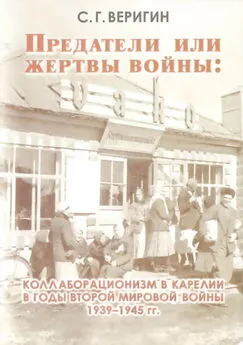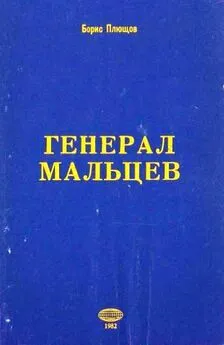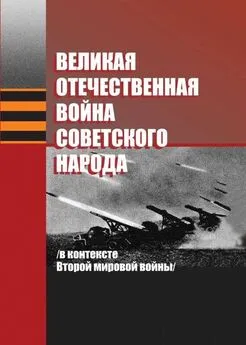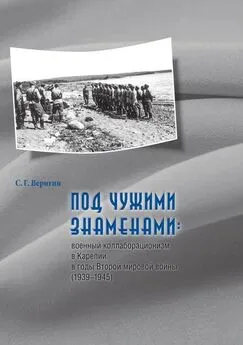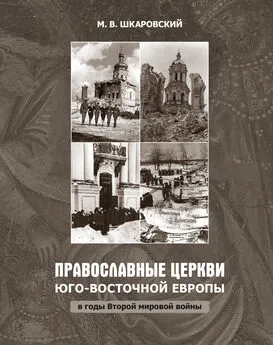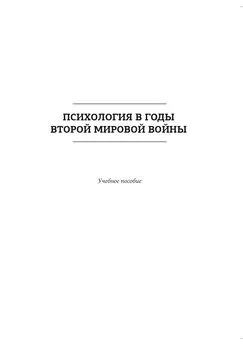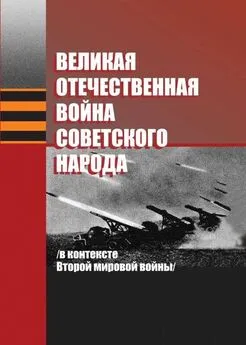Сергей Веригин - Предатели или жертвы войны: коллаборационизм в Карелии в годы Второй мировой войны 1939-1945 гг.
- Название:Предатели или жертвы войны: коллаборационизм в Карелии в годы Второй мировой войны 1939-1945 гг.
- Автор:
- Жанр:
- Издательство:ПерГУ
- Год:2012
- Город:Петрозаводск
- ISBN:978-5-8021-1367-7
- Рейтинг:
- Избранное:Добавить в избранное
-
Отзывы:
-
Ваша оценка:
Сергей Веригин - Предатели или жертвы войны: коллаборационизм в Карелии в годы Второй мировой войны 1939-1945 гг. краткое содержание
Книга подготовлена на базе широкого круга источников, основу которого составили архивные документы из фондов государственных и ведомственных архивов России и Финляндии. Многие архивные документы впервые вводятся в научный оборот.
Предатели или жертвы войны: коллаборационизм в Карелии в годы Второй мировой войны 1939-1945 гг. - читать онлайн бесплатно полную версию (весь текст целиком)
Интервал:
Закладка:
Положение мало изменилось и после распада СССР. И в настоящее время для большинства граждан новой демократической России люди, сотрудничавшие с оккупационными властями, являются коллаборационистами, остаются предателями своего народа, вставшими в трудные для страны годы на сторону противника.
Проблема коллаборационизма в Карелии и Финляндии в годы Второй мировой войны по идеологическим соображениям долгое время была закрыта для ученых и только сейчас становится объектом научного интереса российских историков. Предстоит выяснить еще много вопросов: уточнить точное число советских граждан, сотрудничавших с финскими оккупационными властями в годы Второй мировой войны, определить причины этого явления и его социальную базу. При исследовании данного вопроса следует также выяснить: насколько адекватны были репрессии финских властей к своим гражданам, которые сотрудничали с советскими государственными и военными органами в период Зимней войны, и репрессии советских властей в 1941–1944 гг. по отношению к тем, кого считали коллаборационистами: в первую очередь к бывшим военнопленным и репатриантам, проживавшим и работавшим на оккупированной территории Карелии, а затем вывезенным в Финляндию.
Но уже сегодня на основе анализа большого количества документального материала о сотрудничестве местного населения Карелии и Финляндии с оккупационными властями в период Второй мировой войны можно дать ответ на главный вопрос, поставленный во введении: кем были коллаборационисты — предателями своих стран или жертвами войны. На наш взгляд, нельзя оправдать военную коллаборацию. Тех финских и советских граждан, которые перешли на сторону противника и с оружием в руках воевали против своей родины, можно с полным основанием отнести к предателям. При этом, надо признать, среди них было мало идейных борцов, большинство коллаборационистов переходили на сторону противника, либо спасая свои жизни и жизни своих близких, либо под принуждением.
Поведение тех советских и финских граждан, которые пошли на сотрудничество с оккупационными властями в сфере хозяйственной или культурной деятельности в военный период, можно если не оправдать, то по крайней мере понять. Большинство из них оказались на оккупированной территории помимо своей воли в силу суровых военных обстоятельств, а зачастую по вине и нерасторопности собственных органов власти и управления, не сумевших вовремя и организованно провести эвакуацию населения в начальный период военных действий. Особенно это касается вопросов эвакуации мирного финского гражданского населения в период Зимней войны 1939–1940 rr. и эвакуации советских людей в начальный период Великой Отечественной войны. Их с полным основанием можно отнести к жертвам войны. Долгие годы после ее окончания и на тех, и на других лежала «печать оккупации и плена».
SUMMARY
Summing up the results of the research, first of all, it is necessary to note that the scale of collaborationism development in Karelia and Finland during World War 11 was negligiЬle. Only а small number of caught in the Soviet occupation zone Finnish civilians and Finnish prisoners of war cooperated with the Soviet state and military authorities during the Soviet — Finnish (Winter) War (1939–1940). Due to а small number of Finnish civilians and their unwillingness to cooperate with occupation administration the Soviet authorities failed to create а broad base of support of People's Government of Finland headed Ьу Kuusinen from the local population.
The conclusion that collaborationism didn't spread widely between Finns during the Winter War is also verified Ьу the fact that from 2080 of Finish civilians appeared on the territory of the Soviet Karelia after the end of military actions only 150 people decided to stay in the USSR (7,2 %) [504] Verigin S. G., Laidinen Е. Р. Internirovannye finny (The intern Finns) // Sever. 1995. № 3. Р. 99.
, and others came back to their motherland. For the most part it was people who cooperated with the Soviet state and military authorities and were afraid to Ье punished in Finland. Only а small part of Finns refused to return home Ьу the ideological reasons.
Collaborationism of Soviet civilians and Soviet prisoners of war on the occupied territory of the Soviet Karelia and Finland during the Great Patriotic War also didn't find а wide spread. It was clearly demonstrated in the final stage of military actions in the North when during the Soviet troops' attack in summer of 1944 Finnish military units began to retreat and therefore evacuation of local people also began.
2799 people were evacuated from the occupied Karelian territory to Finland, or only 3,35 % of total population of occupied zone, among them representatives of the related to Fins peoples accounted 2196 people (1422 Karelians, 314 Veps, 214 Finns, 176 Ingrians and 70 others), other peoples — 603 (244 Russians, 259 Ukrainians and 100 others) [505] Seppalaya Н. Finlyandiay kak okkupant v 1941–1944 godah (Finland as an occupant in 1941–1944). Р. 126.
. There is also data about Petrozavodsk. In the end of June 1944 when Finnish troops left the town only 487 people from 7589 of free civilians came with them [506] Petrozavodsk i petrozavodchane v gody Velikoi Otcchestvennoi voiny (Petrozavodsk and it's citizens during the Great Patriotic War). Р. 61.
.
The data shows the number of people moved to Finland was negligiЫe. NotaЬly, 3,35 % of collaborationists includes both people actively cooperated with occupation regime as well as people sympathized to the enemy. The data is significantly lower than those quoted Ьу V. 1. Boyarsky in the book "Partisans and army: the history of lost opportunities" ("Partizany i armiya: istoriya uteryannyh vozmozhnostei") and those the author noted in the introduction: "After several years of occupation 10 % of population can become traitors (3 % — active and 7 % — sympathized to the enemy)" [507] Boyarsky V. I. Partizany i armiya: Istoriya uteryannyh vozmozhnostei (Partisans and army: the history oflost opportunities). М., 2003. Р. 4.
. Thus, we can confidently assert that the scale of collaborationism on the occupied territory of Karelia was significantly lower than in other country's regions that caught in the occupation zone.
lt is primarily explained Ьу the fact that there was no social base for а wide development of collaborationism in the occupied Karelian regions. The background of the base during the Great Patriotic War consists of people offended Ьу the Soviet authority (dispossessed kulaks, people suffered from religion persecutions, people repressed in the period of mass repressions in the second half of 1930s for political and national reasons etc.). Such people appeared to Ье very few in the occupied zone.
Generally evacuation of the population during the first period of the Great Patriotic War in Karelia, that at once became the frontline repuЬlic, succeeded in а very short time. All in all, according to the incomplete data, more than 530 thousands from 700 thousands of people who lived in the repuЬlic before the war were evacuated from the occupied repuЬlic regions. Working people of Karelia moved to the Vologda region, the Arkhangelsk region, the Кirov region, the Sverdlovsk region, the Gorkov region, the Novosiblrsk region, the Chelyablnsk region and others as well as to Komi, Bashkir, Chuvash, Udmurt and Tatar repuЬlics. Part of the population was evacuated to the eastern shore of the Onega Lake — the Pudozh region.
In the process of evacuation People's Commissariat for State Security of the Karelian-Finnish SSR first evacuated prisoners from Vyborg and Petrozavodsk jails as well as prisoners from cages that were part of the White-Sea-Baltic Plant (Belomorsko-Baltic Plant). In the end of 1930s the number of prisoners and special settlers worked for the White-Sea-Baltic Plant accounted for а quarter of all Karelian population [508] Verigin S. G. Kareliya v gody voennyh ispytany: Politicheskoe i sotsialno-economicheskoe polozhenie Sovetskoi Karelii v period Vtoroi mirovoi voiny 1939–1945 gg. (Karelia during the years of military hardship: The political and social — economic position of the Soviet Karelia during World War II 1939–1945). Petrozavodsk, 2009. Р. 51.
. Besides, special settlers (former kulaks) who had been expelled from other parts of the Soviet Union to the special settlements in Karelia in 1930s were also primarily evacuated. At the same time evacuation began even before the beginning of the military actions on the territory of the Karelian-Finnish SSR and entering of Finland in the war against the USSR in favour of Nazi Germany [509] The Finnish troops invaded the USSR in the border regions of Karelia and the Karelian Isthmus at night from June 30 to July 1, 1941.
. It can Ье assumed that the Soviet authorities were frightened that not-evacuated "doubtful element which is under consideration" could take the side of the enemy.
All of these actions carried out Ьу People's Commissariat for State Security of the Karelian-Finnish SSR in the beginning of the war were of compulsory nature. However, as it is seen from the further events during the Finnish occupation of Karelia, they significantly reduced the social base of collaborationism development.
The absence of wide development of collaborationism on the occupied Karelian territory became the main argument for the government of the repuЬlic on summer 1944 when the Central Committee of the All-Union Communist Party considered the issue about the Karelian-Finnish SSR liquidation and removal of Karelians, Veps and Finns to Siberia. The repuЬlic was saved and the tragic consequences of people's deportation managed to Ье avoided [510] The repression policy against the entire nations was widely used Ьу Stalin's administration during the war time. The nation-state formations of the Volga Germans, Kalmucks, Karachai, Chechens, Ingush, Balkarian, Crimean Tatars and others, and the peoples themselves were deported to the eastern regions of the USSR.
.
Интервал:
Закладка:
